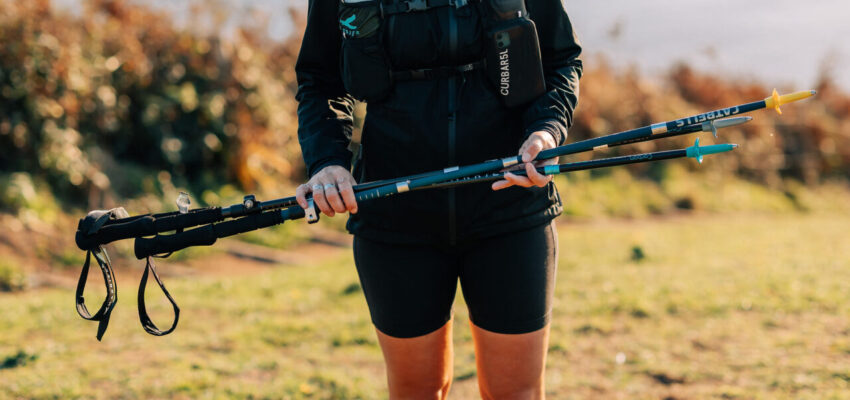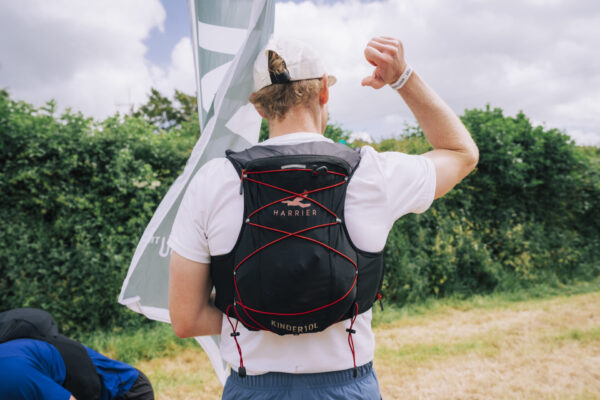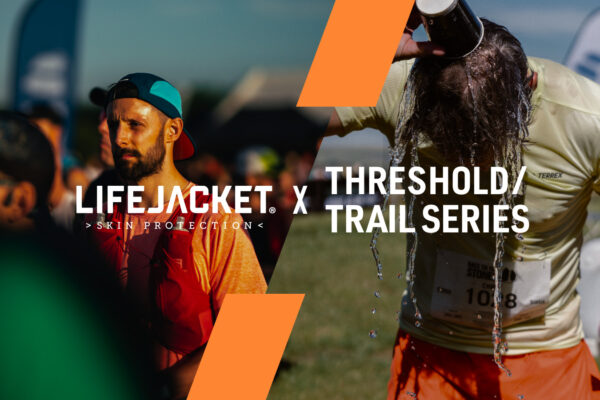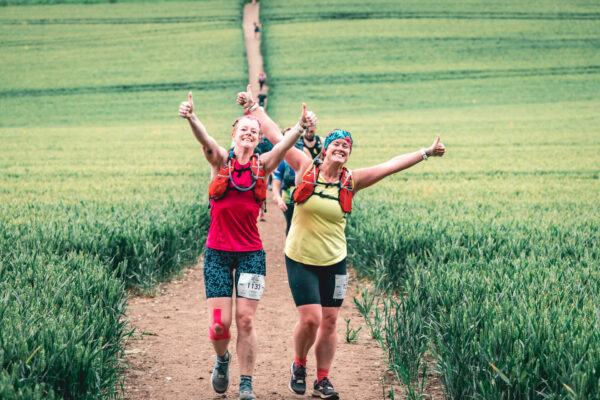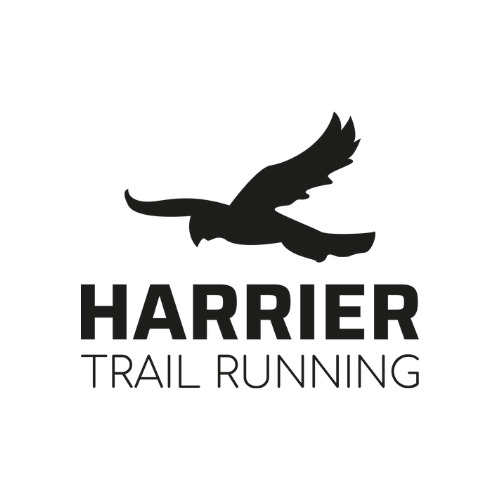In this blog post we sit down with Harrier, the Official Trail Equipment Partner across the Threshold Trail Series, to discuss all things poles and hopefully give you the knowledge you need to make the decision that’s right for you and your ultra.
Grab a cuppa and enjoy the read.
Will I need poles for Race to the King or Race to the Stones?
Although poles aren’t essential or mandatory for the Threshold Trail Series events, they can be a great aid and a handy way to conserve energy, cover the ground more efficiently and help maintain good posture over these longer distances.
Poles don’t just help you improve your posture when fatigue kicks in, they can also delay it, as when used effectively they can act to take some of the workload from your legs and transfer it to your arms.
This could be most noticeable when tackling the hills. With both routes including a fair amount of ups and downs, getting to grips with using poles can help you get that little extra bit of propulsion up those big climbs and save them for the business end of the race.
Should I use poles on the Coastal and/or Castle routes on Race to the King?
Whilst many have completed the Race to the King route without poles, if you can get to grips with when and where to use them then there is no denying that they could be a great asset to add into your race day strategy.
With the Coastal Route being the flatter of the two halves, there is arguably less need for the support that poles can offer during this half vs the hillier Castle Route. With that being said though, if you’re heading out on the Castle Route as part of the 100k then smart use of poles to help you cover those flatter sections more efficiently could leave your legs with more in the tank to attack the hills during the second half.
If I decide to take poles with me, when should I use them?
How you use poles during a race depends on your strengths, weaknesses, and goals. Harrier recommends using them from early to extend benefits across the whole race and manage your energy wisely, rather than using them as crutches towards the end when you are exhausted.
It’s important to make sure that you practise with them before race day, so on the day running or walking with your poles is second nature.
Is there a time when I should not use poles?
There can be times during a race where it’s simply not safe to use poles. For example, if you have a particularly technical section, such as scramble, where you need to have your hands available, fold and store your poles until the terrain is safe to use them again. (Thankfully, Race to the King covers non-technical terrain, so this should not be an issue.)
What shall I do with the poles when not using them?
There are lots of different ways of storing poles depending on which race vest you use. Harrier race vests have at least one method of holding poles which is along the back of the vest. Some models of Harrier race vests also allow them to be held each side at the front of the vest. Depending on how you pack your vest, and how easy you want them to be able to access them will determine where you carry them.
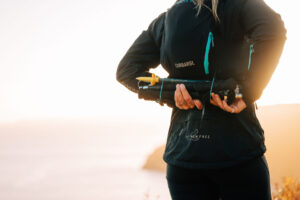
What’s the benefit of using poles?
There are so many benefits to using poles! They help distribute effort across your whole body, reducing the impact on knees, ankles and feet by up to 40%! Poles help improve your posture, balance, stride and they reduce fatigue. They’re also great for recovery. After an ultra or hard training session your body can be fragile and at risk of injury for much longer than you think. Use poles post-race to improve stability and help prevent injury whilst allowing you to keep up with some base level, low impact fitness.
What’s the difference between aluminium and carbon poles?
There are two main differences between aluminium and carbon poles: weight and price. Aluminium is a less expensive material, however it’s a bit heavier. Carbon poles are more lightweight, but are also more expensive. Both materials are super strong, but when choosing your poles you should think about the type of terrain where you’ll mostly be using them. If you’ll be on lots of rugged, rocky terrain, aluminium may be the better option for you. Carbon, being the lighter weight material, is ideal if you’re covering long distances and gram counting.
Should I use adjustable or fixed length poles?
Adjustable length poles are great if you’ve never used poles before, or if you like to have a bit more flexibility with the height. Whilst offering greater flexibility, adjustable length poles do tend
to be slightly heavier than the fixed length options. Fixed length poles are ideal if you have experience using poles and know the height that works best for you. They’re also lighter than adjustable length poles, which is perfect if you’re gram counting or covering longer distances.
How do I use poles?
Harrier believes in the “walk before you can run” philosophy, especially when it comes to running with poles. Try investing in a 1:1 or group session with British Nordic Walking. They have local instructors around the country. Nordic walking provides all the fundamentals which you can then apply to your trail running. Harrier also have some fantastic resources on their Pole Quick Start Guide page.
If I wanted to purchase some poles, where should I look?
Harrier offer a great selection of z-poles for beginners and experienced alike. Check out their full range and fantastic How-To resources here.

